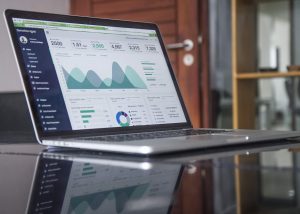It finally happened. You got so frustrated with the numbers on the scale that you threw that thing out the window. While you probably did so for the wrong reasons, we commend you. The scale is probably the worst way to measure and track your weight.
The fact is, the numbers didn’t climb because of your body fat—the scale doesn’t actually measure that. As we described in our last blog post, daily fluctuations are almost always the product of water or inflammation, and your scale simply doesn’t know the difference. It’s lumping bone, fat, muscle, and water together and weighing them all at once. So, now that your scale is lying on the sidewalk in pieces, how can you accurately track your progress on your quest to drop pounds?
7 Ways to Measure and Track Body Composition
1. DEXA (Dual X-ray Absorptiometry)
DEXA is the gold standard for measuring body composition and bone health. The scan precisely measures the percentage of fat, bone, and lean muscle throughout your body, including visceral fat (the deep kind that’s wrapped around your organs).
- Pros: It’s quick and easy, taking just 10 minutes for a scan, and considered the most accurate measurement of body composition.
- Cons: It’s expensive, costing $100-200 per scan. Also, while you should be tracking regularly, exposing yourself to radiation weekly or monthly isn’t so good.

Underwater weighing is one of the options for measuring body composition. (Photo by Emma Paillex on Unsplash)
2. Hydrostatic Underwater Weighing
Fat floats and muscle sinks. Hydrostatic underwater weighing keeps this in mind. It determines body density by measuring your bodyweight outside water and then under water after exhaling completely, along with the water density. The resulting body density is put into an equation to determine your body fat percentage.
- Pros: Unless you’re afraid of the water, it’s relatively reliable and accurate.
- Cons: It’s costly and not widely available. Also, many people have difficulty exhaling completely and staying completely still.
3. BOD POD
Sit in this large egg-shaped fiberglass device for about three minutes, and you have a precise measurement of your body fat and weight, as well as your resting metabolic rate. The system uses air displacement technology, which is as accurate as underwater weighing, but quicker and easier to perform.
- Pros: It’s highly accurate, and accommodates all ages and sizes.
- Cons: Locating a Bod Pod can be difficult, and it can get costly with regular use.

Fit3D measures body composition and you can track results online. (Photo by Carlos Muza on Unsplash)
4. Fit3D
Twin Cities Metabolism’s Fit3D Proscanner technology uses infrared light and a camera to scan and measure over 400 points on your body before converting them into precise body measurements. Once the scan is complete, you can track your updated data online.
- Pros: It provides one of the most comprehensive, non-invasive body composition assessments with a quick, 40-second scan. Plus, it’s affordable. At Twin Cities Metabolism, it’s $35/scan, $99 for a four pack, or $149 for an eight pack, which brings the per-scan price down to $18!
- Cons: You’ll have to remove most of your clothes for the best reading, and it’s possible to misinterpret the results when viewing on your own.
5. Bioelectrical Impedance Analysis
Devices like the InBody offered by Twin Cities Metabolism, which uses bioelectrical impedance analysis, send tiny electrical impulses through the body and measure how quickly they return. Since lean tissue conducts electrical impulses quicker than fat, a faster response time means a leaner physique.
- Pros: BIA is fast and inexpensive, and you can test with or without a trained professional. At Twin Cities Metabolism, the InBody scans cost $35/scan, $99 for a four pack, or $149 for an eight pack, which brings the per-scan price down to $18.
- Cons: You can’t use BIA if you’re pregnant or have a pacemaker.
6. Skin-Fold Calipers
If you don’t mind a little pinch, skin-fold calipers can reveal your body-fat percentage. After pinching and measuring the thickness of specific body areas (typically the chest, arms, abs, and thighs), your numbers are used in a formula that estimates overall fat.
- Pros: Since the calipers are inexpensive, they’re easily accessible at fitness centers. The assessment can be performed in a matter of minutes.
- Cons: Results can be unreliable if the exact area isn’t pinched each time or someone new measures you. Also, it only measures fat under the skin, not the deep, visceral fat.
7. At-Home Methods
When it comes to quick, easy, and accurate, measuring tape and a mirror are all you need. In fact, looking in the mirror regularly gives you a better idea of body composition than a scale. Like the scale, however, measuring tape won’t tell you how much body fat you have. It simply shows you how big you are, which can be skewed if you’re really muscular.
Regardless of which method is used, everyone should be tracking their body composition on a regular basis to achieve and maintain lasting health.
Ready to put the tools to work for you? We’re ready to guide you. Get in touch.

One Comment